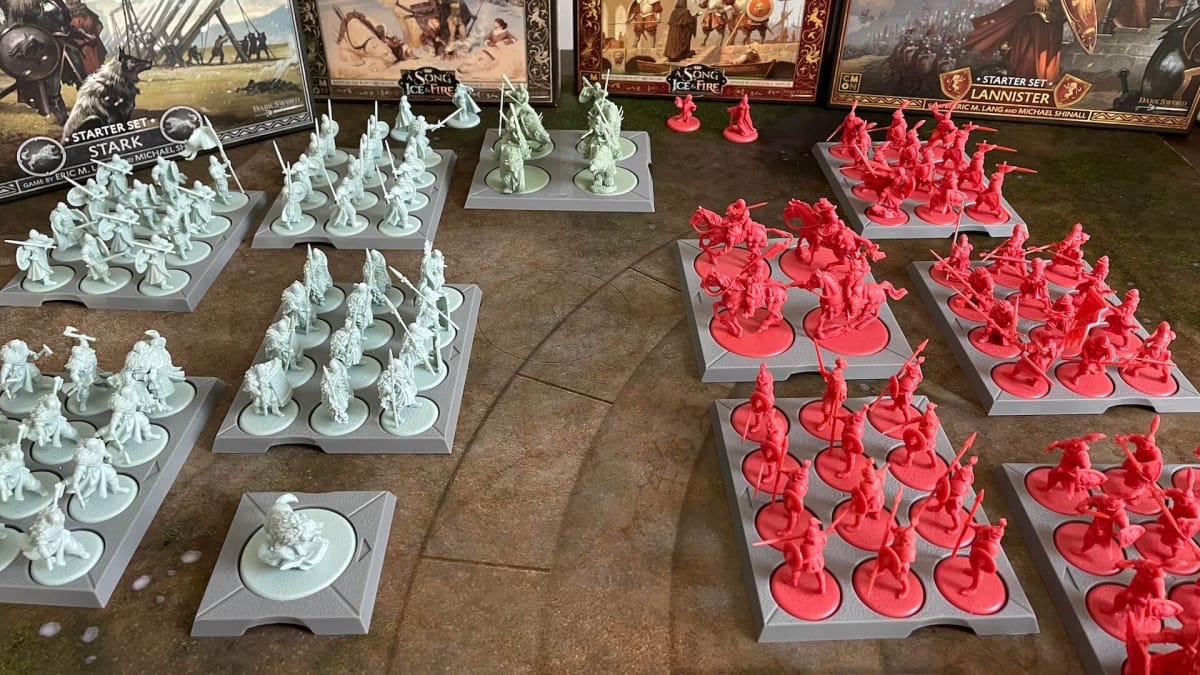Common Terms

Activation: Each unit has its own activation each round. It is important to note that some effects and abilities only take place during a unit’s activation and would not, for example, happen during a free action given to the unit.
Attacker: when a unit attacks, it is referred to as the attacker.
Enemy: Enemy refers to any unit or card not controlled by you.
Engaged: A unit is engaged when it is in contact with one or more enemy units.
Defender: When a unit is attacked, it is referred to as the defender.
First Player: Each round, one player is designated as the First Player. They are the First Player They are the first to activate a unit that round.
Free Action: Many effects will allow a unit to make a free action (such as a free Attack or Maneuver). These actions do not interfere with a unit’s normal activation in any way, and they may be performed even if the unit has already activated this round.
Friendly: Friendly refers to any unit or card controlled by you. When an Ability or effect targets a friendly unit, it may include any such unit whose tray is even or partially in range of the effect, including the unit from which the effect originates.
Hit/Automatic Hit: When units are attacked, each success generates 1 Hit. Sometimes an effect will generate a Hit without needing to roll. All Hits/Automatic Hits allow Defense Saves. Unblocked Hits are converted into Wounds.
In Short/Long Range: When an effect targets a unit in Short Range or Long Range, that unit is considered to be in range if any part of its tray is within the listed range. Units are always considered to be within range of their own effects and may target themselves, unless specifically stated otherwise.
Model: Models are miniatures that represent either player’s army on the table. Terrain and tokens are not models.
Move: Whenever a unit’s tray is physically repositioned by rule, the unit is movie (this includes Pivoting).
Pivot: When a unit pivots, it is rotated around its center to any facing, ignoring other units’ trays (both friendly and enemy), as long as they do not end overlapping.
Round: A Song of Ice and Fire is played over a number of rounds. Each round is composed of a number of turns.
Shift: When a unit shifts, it is moved up to the distance listed (eg. Shift 2″) directly forward, backwards, or sideways (never diagonally). Units do not pivot at any point during a shift.
Target: This refers to the chosen recipient of an Ability or effect (such as Orders or Tactics Cards).
Terrain: Terrain makes up the non-model elements of the battlefield, such as trees, ruins, rocks, etc.
Tokens: Tokens are used to track various conditions and effects both on units and the battlefield. Tokens do not physically affect the battlefield in any way unless specifically noted otherwise.
Turn: A player’s turn describes when they are performing a unit’s activation. Rounds are composed of various player turns.
Unengaged: A unit is unengaged when it is not in contact with any enemy units.
Wounds: Wounds represent the overall health of a unit. In most cases, when a unit suffers Wounds, 1 model is removed from the unit for each wound suffered. Some effects will say to deal a unit a number of wounds. Wounds do not allow Defense Saves. They are automatically damage to the unit.